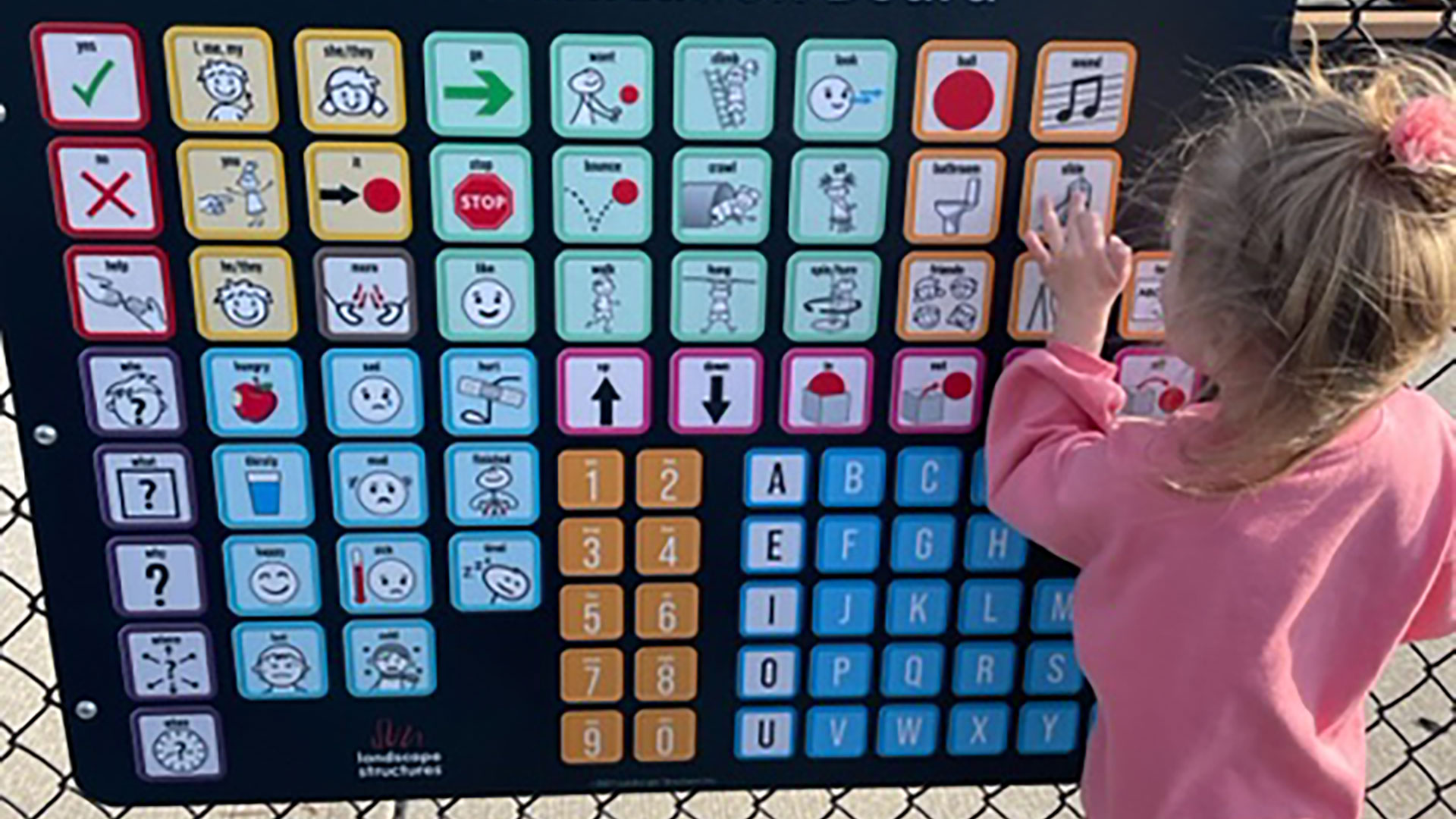Like many school-based speech therapists across the country, Rachel Parker’s caseload has increased dramatically since the COVID-19 pandemic – but also been totally transformed.
“Our population has definitely changed. When I started, most of my work was in articulation or vocabulary, but now, more students are coming in with significant communication issues, including more students who are nonverbal or have very limited communication skills,” said Parker, a speech therapist at Homer Elementary School and member of the Homer Teachers Association.
So how has this changed her approach? “We’re changing what therapy looks like,” Parker explained. She and her colleagues are doing more co-treating, more push-ins, and finding ways to do interventions in all accessible locations, including the playground, she said.
Last year, at Parker’s behest, the district installed communication boards at all three playgrounds. The boards, which feature a variety of symbols and pictures and cost between $5,000 and $8,000, are designed to help children of all abilities communicate with each other.
So far, the boards are a popular addition to the playgrounds. “I’ve heard from several families, who said, ‘This is so great,’ and ‘This is so inclusive!’”

The boards are just one example of how speech therapists are meeting the changing – and growing – needs of their students.
“The big challenge for us is making sure we’re providing services to all the students,” said Caroline Murphy, a speech therapist at PS 212 in Jackson Heights and chapter leader for speech therapists at the United Federation of Teachers.
Over 3,800 speech-language pathologists and speech improvement teachers work for the New York City Department of Education, yet the demand for services still exceeds capacity, Murphy said. As caseloads grow, therapists face a significant increase in paperwork and indirect responsibilities, such as programming AAC devices, creating engaging materials, collaborating with teachers, parent engagement, and attending IEP meetings.
“I may see 20 students a day, but I only have 45 minutes outside of lunch for preparation and handling these additional tasks,” Murphy said. As a result, more therapists are saying that balancing their caseloads and their workload is a struggle.
In 1975, the Education for All Handicapped Children Act (EHA) (PL 94-142) was passed; the name changed to IDEA in 1990 when it was reauthorized. IDEA enshrined the right of all students with disabilities to be educated in the “least restrictive environment” that best meets their individual needs. As a result, an increasing number of students with disabilities are now being educated in general education settings alongside their nondisabled peers.
Maureen Benson, a speech therapist at Daniel Street School in Lindenhurst for 20 years and member of the Teachers Association of Lindenhurst, said that in the past, her day was mostly made up of articulation and fluency sessions, but now she’s seeing students with all different types of language disabilities, and that requires her to constantly change gears and mix up her approach.
“It’s definitely not a one-size-fits-all solution,” Benson said. “That’s the biggest part of the push for the least restrictive environment. It’s amazing, but it does have an impact.”
The other impact is that sometimes prevention gets sidelined, Benson said. “Mandated services come first, so I can’t even get to other students until my mandated cases are handled,” Benson said. As a result, speech improvement services consistently get moved to the back of the line.
“That’s hard for speech therapists, because as members of ASHA [American Speech-Language-Hearing Association], we have an ethical and moral obligation to our students, but we’re also bound by the legality of the situation.”
Anthony Amitrano, of the Mohonasen Teachers Association, has been a speech therapist at Pinewood Intermediate in Schenectady for six years and says during that time the district has had to bring on an additional speech therapist to keep up with the growing demand for services.
Now, Amitrano’s eyeing the growing special needs population at the primary school and wondering if his caseload is about to change again.
“It’s like watching a wave from far away and thinking, ‘What’s going to happen when all those students get here?’”
Amitrano said that, at least so far, his supervisor has been able to make a compelling case for hiring additional staff based on data. But as school budgets get leaner, he worries that more districts will begin contracting their speech services to outside agencies.
“I hope that is not the route this profession goes in,” he said. “I think there’s something to be said for us being part of the fabric of the school.”